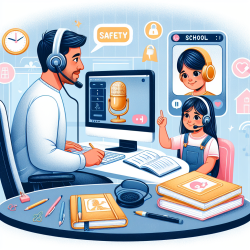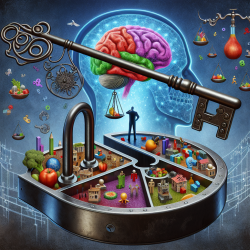Introduction
In the quest for inclusive and effective STEM education, the recent study titled "Cultivating Cultural Capitals in Introductory Algebra-Based Physics Through Reflective Journaling" provides valuable insights. Conducted at a diverse, Hispanic-serving university, the study explores how reflective journaling can enhance the educational experience of students from racially diverse backgrounds. This blog post aims to guide practitioners in leveraging these findings to improve their teaching strategies and encourage further research in this area.
Understanding the Study
The study was conducted as part of the Alma Project, which focuses on supporting students' intersectional identities and cultural wealth in STEM classrooms. By analyzing 180 reflective journaling essays from students enrolled in General Physics I, the researchers identified 11 cultural capitals that students frequently expressed. These capitals include aspirational, attainment, and navigational capital, among others.
The study emphasizes the importance of recognizing and leveraging students' lived experiences, goals, and values to make physics learning more meaningful and engaging. It highlights how reflective journaling can be used as an asset-based teaching tool, affirming students' identities and fostering a sense of belonging in STEM spaces.
Implementing Reflective Journaling in Practice
Practitioners can incorporate reflective journaling into their teaching strategies by following these steps:
- Introduce Reflective Journaling: Begin by explaining the purpose of reflective journaling to students, emphasizing its role in connecting personal experiences with academic content.
- Create a Safe Space: Foster an inclusive environment where students feel comfortable sharing their thoughts and experiences. Encourage open dialogue and respect for diverse perspectives.
- Design Thoughtful Prompts: Use prompts that encourage students to reflect on their motivations, goals, and challenges in STEM. For example, ask students to consider "Why am I here?" or "How do my experiences shape my learning journey?"
- Facilitate Peer Sharing: Allow students to share their reflections with peers, promoting a sense of community and collective learning. Encourage discussions that highlight common struggles and successes.
- Use Reflections to Inform Teaching: Analyze students' reflections to identify common themes and cultural capitals. Use these insights to adapt teaching strategies and create more inclusive and engaging learning experiences.
Encouraging Further Research
While the study provides valuable insights, there is still much to learn about the impact of reflective journaling in STEM education. Practitioners are encouraged to conduct further research to explore the following areas:
- Longitudinal Studies: Investigate the long-term effects of reflective journaling on students' academic performance and persistence in STEM fields.
- Diverse Contexts: Explore the implementation of reflective journaling in different educational settings and disciplines to understand its broader applicability.
- Impact on Instructors: Examine how reflective journaling influences instructors' teaching practices and their understanding of students' needs and experiences.
Conclusion
Reflective journaling offers a powerful tool for enhancing STEM education by recognizing and leveraging students' cultural capitals. By implementing this practice, educators can create more inclusive and engaging learning environments that affirm students' identities and foster a sense of belonging. To read the original research paper, please follow this link: Cultivating cultural capitals in introductory algebra-based physics through reflective journaling.










